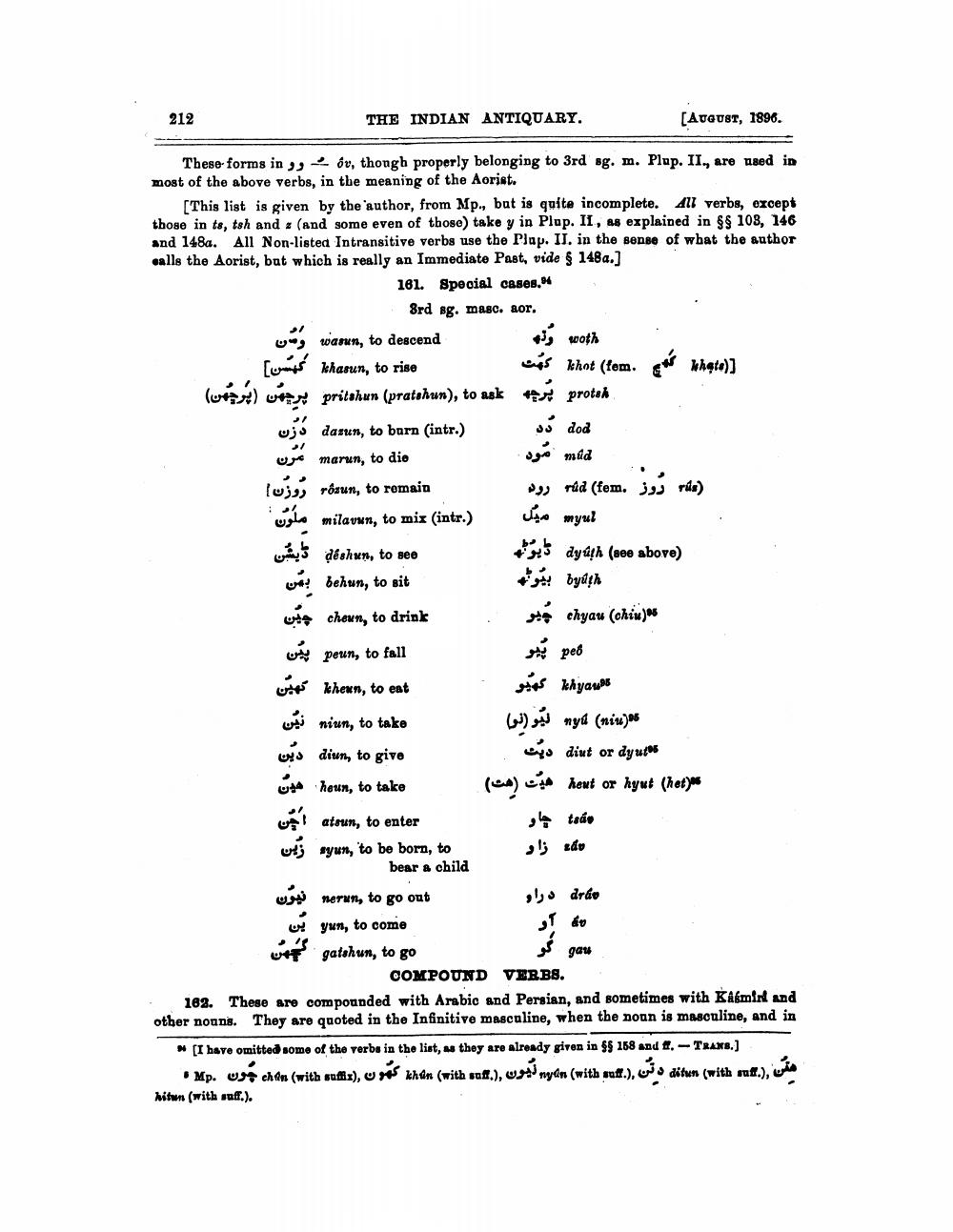________________
212
THE INDIAN ANTIQUARY.
[AUGUST, 1996
These forms in ), ov, thongh properly belonging to 3rd sg. m. Plup. II., are used in most of the above verbs, in the meaning of the Aoriet.
[This list is given by the author, from Mp., bat is quite incomplete. All verbs, except those in ts, tsh and = (and some even of those) take y in Plop. II, as explained in $$ 108, 146 and 148a. All Non-listed Intransitive verbs use the Plap. II. in the sense of what the author calls the Aorist, but which is really an Immediate Past, vide $ 148a.]
161. Special cases.
8rd sg. masc. aor. U", warun, to descend
sooth khasun, to rise
ás khot (fem. cur whęte)] lux) pritshun (pratohun), to ask protsh
dazun, to barn (intr.) só dod marun, to die
Ago müd rôzun, to remain ngy rid (fem. jos rius) milavun, to mix (intr.)
myul qeshun, to see
dyûh (see above) behun, to sit
byłgh who chown, to drink
chyau (chiujas A peun, to fall
khern, to eat wie niun, to tako Los) on nyú (niu) wys diun, to give
bys diut or dyuta ut heun, to take
heut or hyut (het)** atsun, to enter
- sh tsáo ayun, to be born, to
bear a child nerun, to go out
yun, to come wie gatshun, to go
COMPOUND VERBS. 162. These are compounded with Arabic and Persian, and sometimes with KAfmid and other nouns. They are quoted in the Infinitive masculine, when the noun is masculine, and in
(I have omitted some of the verbs in the list, as they are already given in $$ 168 and f. -TRANB.)
Mp. usé chin (with pufis), o más khan (with sufl.), usad nyan (with auf.), os ditun (with rotfl.), using hitun (with saff.).
pes پیر
کھیر کاهkhyat
gan کو




